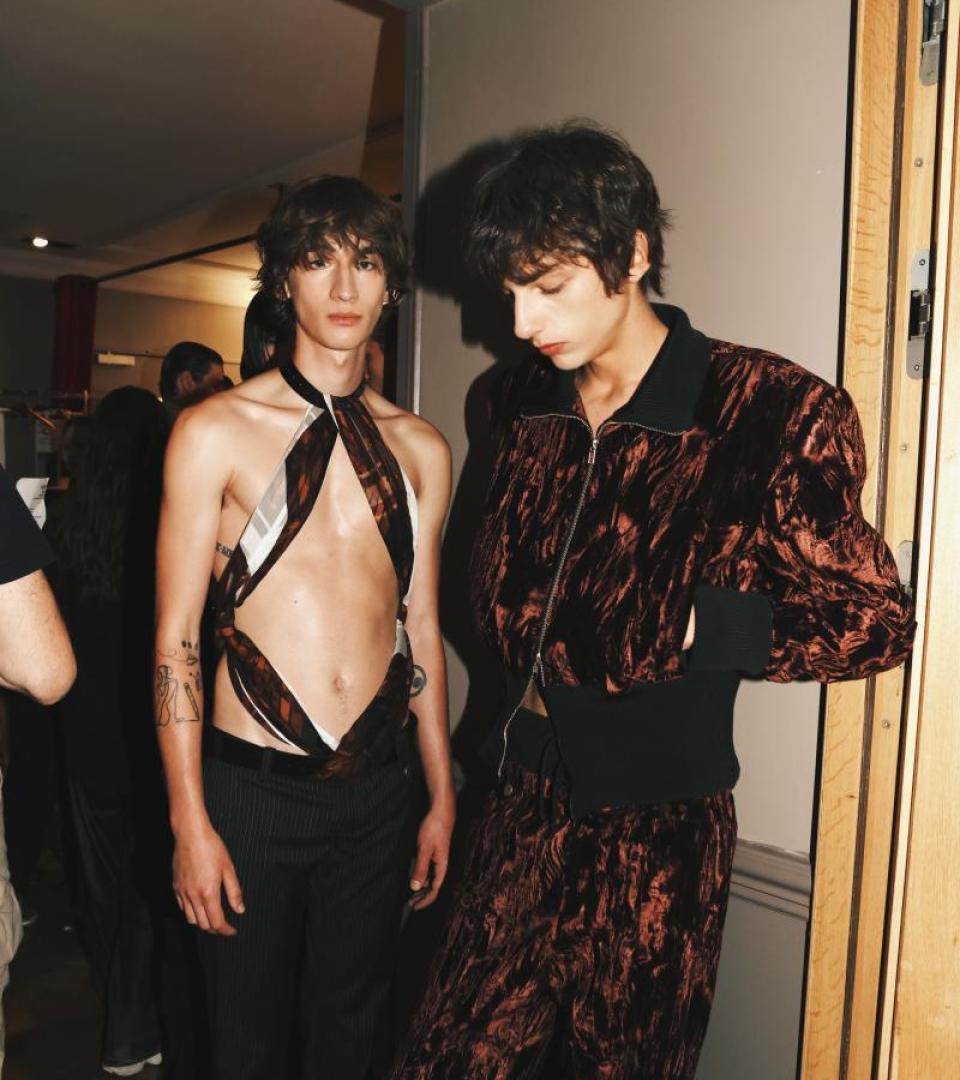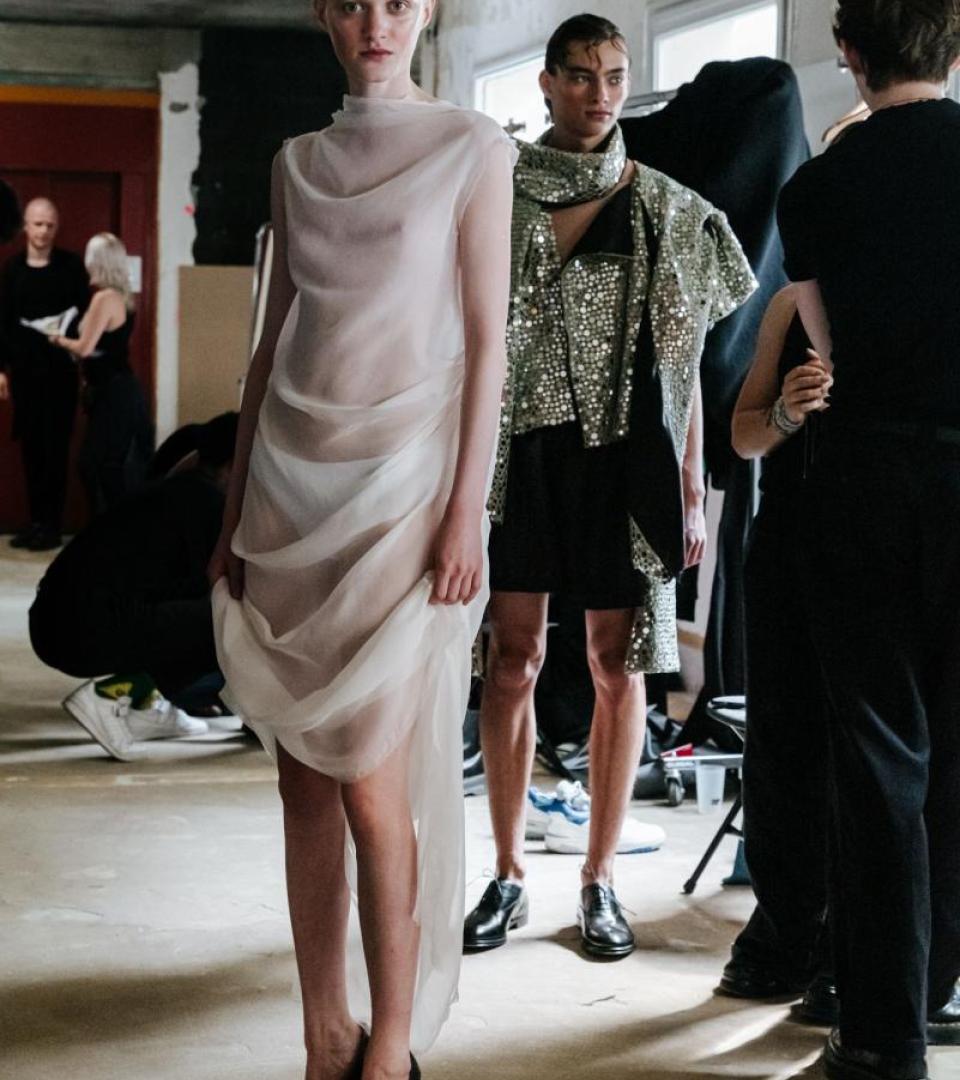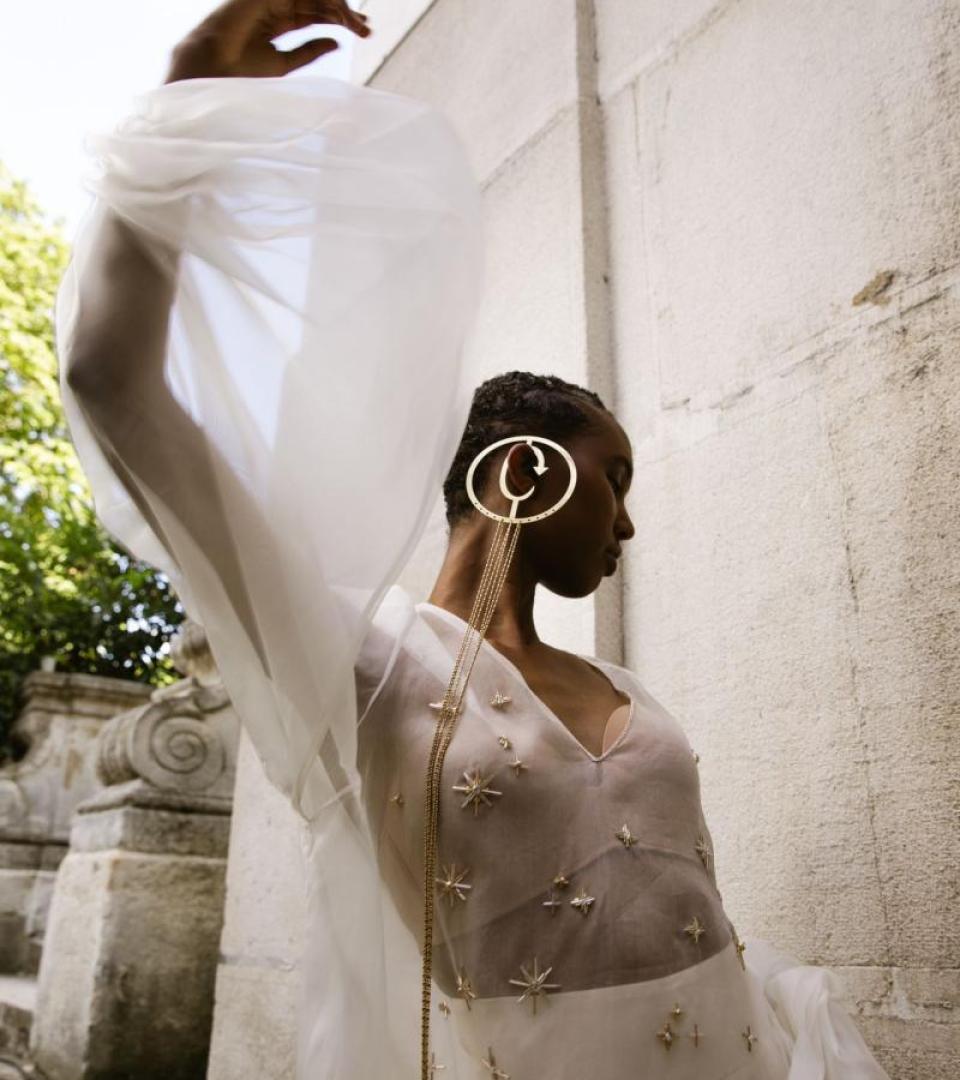Walter Van Beirendonck Has Seen the Future
By Paul McLauchlan
It is a complicated position being a fashion designer at one of the most politically fraught moments in history. With war and political conflict raging the world over, the fashion industry still assembles multiple times a year to peddle a dream to its prospective clients. The Belgian designer Walter Van Beirendonck contemplated his role by reflecting upon contemporary society and the contrasts it presents. However, he pondered, can humans focus on happiness and beauty when an overwhelming sadness and peril exist nearby?
With his flair for theatrics and kitschiness, Van Beirendonck studied the contradictions that exist in our world. First, he turned his lens towards the circus – specifically, clowns and the juxtaposition between happy and sad that underscores their character. It manifested through the collection in the form of riffs on clown costumes with three-dimensional polka dots embroidered on tailoring and hats from Stephen Jones. The silhouette took on a clownish shape with a contrast between tightness and outsize proportions. Elsewhere, Van Beirendonck ruminates on other contradictions: tradition posed a counterpoint to modernity with garments inspired by Dutch folklore styled with G-Star Raw denim shorts (a new collaboration for Spring-Summer); a stereotypical play on gender norms manifested itself in the colours with light blue set against pink. A series of playful prints of toys reveal something slightly more macabre: they are made from chainsaws and guns. Within his study of contradicting elements, he arrived at his own: fashion that reflects the harsh reality of the times we live in, and fashion that acts as a salve to the doom and gloom.
On a call from his studio in Antwerp, Van Beirendonck said: “I like to reflect the world that we live in with my collections. On one hand, it’s spontaneous and, on the other, it’s about research. As a designer, I’m combining fact and feeling.”
What would you like us to know about this collection?
I was reflecting on our contemporary world. I was thinking with a slogan [in mind]: The world explodes and I’m dreaming. The world explodes and I’m dancing. The world explodes and I’m happy. It’s that contrast between what’s going on in the world right now, all the terrible things that we experience, and then the fact that you still have to live up to expectations, that you should try to be happy and enjoy yours. It's a contradiction. In fashion, you are working on something that is rather superficial when everything that is happening is so dominant.
I decided to call it ‘I Have Seen the Future’ to underline the spirit of the collection. Here, I am challenging myself to come up with new ideas for the future, not only in design but in the construction of the garments; getting away from traditional stitching and moving into new technologies.
How important is a starting point when designing one of your collections?
Research is an important tool for me because I’m constantly challenging myself to come up with something new every season. It’s what the clients expect also; they want to see a new idea brought forward. I work rather intensively on research for several weeks, making research books, and trying to find new ways of looking at an idea, a garment, and the approach of the collection.
To what extent is instinct part of your work?
For me, it’s important to follow my gut and do what I think is the right thing to do. I’m completely independent, which gives me the freedom to work in a way that I like. Nobody is telling me to do anything again because it sold well. It’s this fresh starting point that I enjoy. I don’t tend to look back on previous seasons; it’s not important at all. This season, it was important to react to everything that was going on in the world with an oversized feeling and go back to something smaller. What I am doing is gut instinct combined with research.
Do you think fashion can change the way we think about the issues that we face today?
When you have a voice, you can communicate messages about peace, it’s good that you do it. Many artists can do this and it’s the same for fashion. I like to use slogans in my clothing to add an edge. Ultimately, some people will get it and some people won’t.
This interview has been lightly edited.



